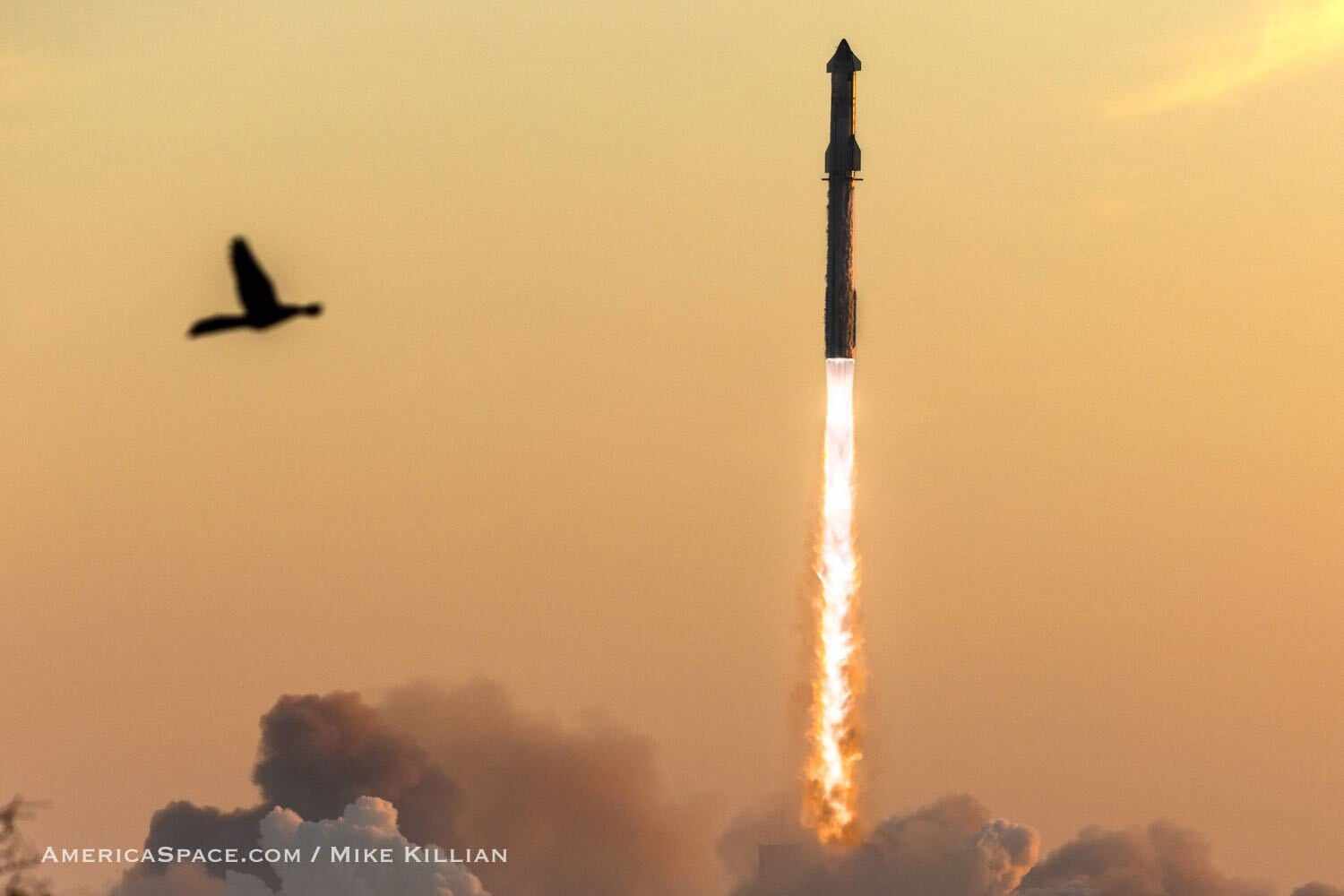
Despite experiencing what it euphemistically describes as a “Rapid Unscheduled Disassembly” (RUD) of booster and ship, SpaceX took a significant forward step early Saturday, with the second Integrated Flight Test (IFT-2) of a combined Super Heavy/Starship combo out of the coastal Starbase in Boca Chica, Texas. Liftoff of the 394-foot-tall (120-meter) behemoth—whose peak thrust of 16.7 million pounds (7.5 million kilograms) renders it the most powerful orbital-class rocket ever launched—took place at 7:03 a.m. CST.
Unlike the IFT-1 attempt last 20 April, today’s flight saw all 33 Raptor engines at the base of the 233-foot-long (71-meter) Super Heavy burning successfully through to Main Engine Cutoff (MECO), a successful “hot-staging” exercise as the booster was discarded and executed a flip maneuver and an (almost) fully successful burn profile of the six Raptors on the 164-foot-long (50-meter) Starship itself. For reasons that remain as-yet unclear, the Autonomous Flight Safety System (AFSS) issued a destruct command as the stack headed out over the Gulf of Mexico.

“Starship successfully lifted off under the power of all 33 Raptor engines on the Super Heavy booster and made it through stage separation,” SpaceX tweeted. “The booster experienced a rapid unscheduled disassembly shortly after stage separation while Starship’s engines fired for several minutes on its way to space.”
On its initial launch in April, the Starship/Super Heavy established a new record for the highest liftoff impulse of any booster in history, greatly exceeding the 7.5 million pounds (3.4 million kilograms) of the long-retired Saturn V, the 8.8 million pounds (3.9 million kilograms) of the Space Launch System (SLS) on last November’s Artemis I mission and even the Soviet Union’s N-1 rocket, which reportedly produced 10.2 million pounds (4.6 million kilograms) during each of its four failed launch attempts between February 1969 and November 1972. However, although IFT-1 cleared the Boca Chica launch pad and attained altitude, it suffered a multitude of technical maladies which ultimately conspired to an untimely—though visually spectacular—demise.
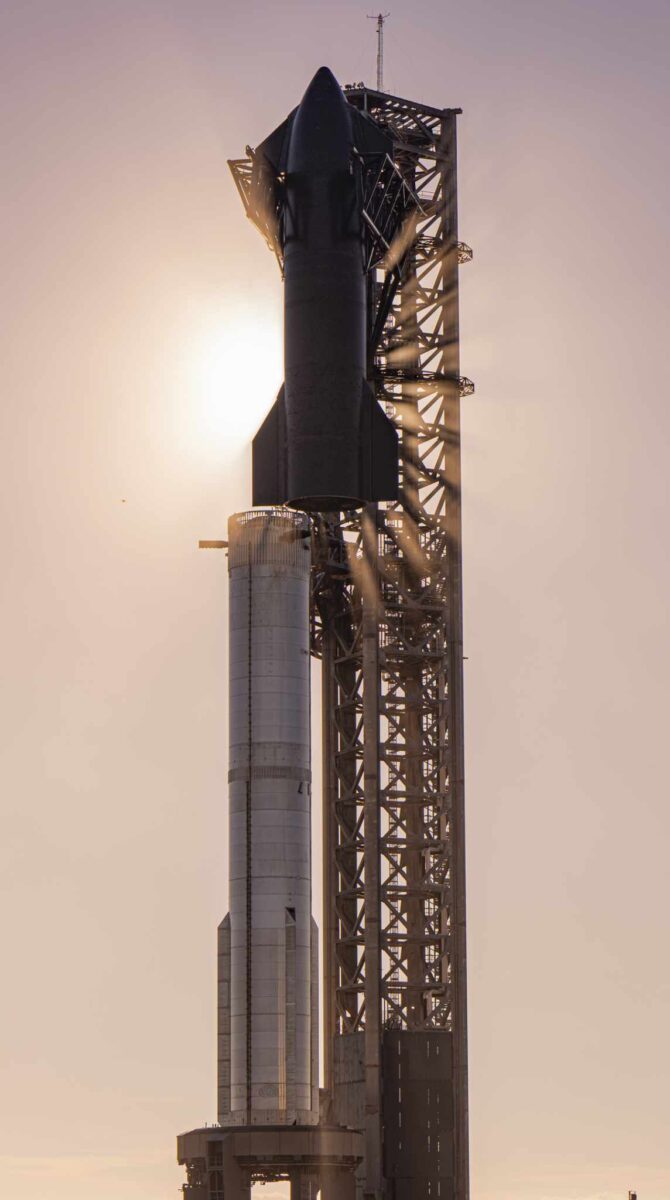
After suffering multiple engine failures immediately after the 20 April liftoff, the behemoth was remotely destroyed at an altitude of about 24 miles (39 kilometers) by the Autonomous Flight Safety System (AFSS) and a subsequent Federal Aviation Administration (FAA) investigation into the mishap was expected to take several months to complete. According to SpaceX, “numerous lessons” were learned from April’s mishap, which—in addition to the loss of the vehicle at altitude—also produced substantial damage to Boca Chica’s launch facilities.
Efforts have been implemented “significantly reinforce” the pad foundations and integrate a water-cooled steel flame deflector, together with other upgrades. A new electronic Thrust Vector Control (TVC) system will feature “fewer potential points of failure” and greater energy efficiency over traditional hydraulic systems.
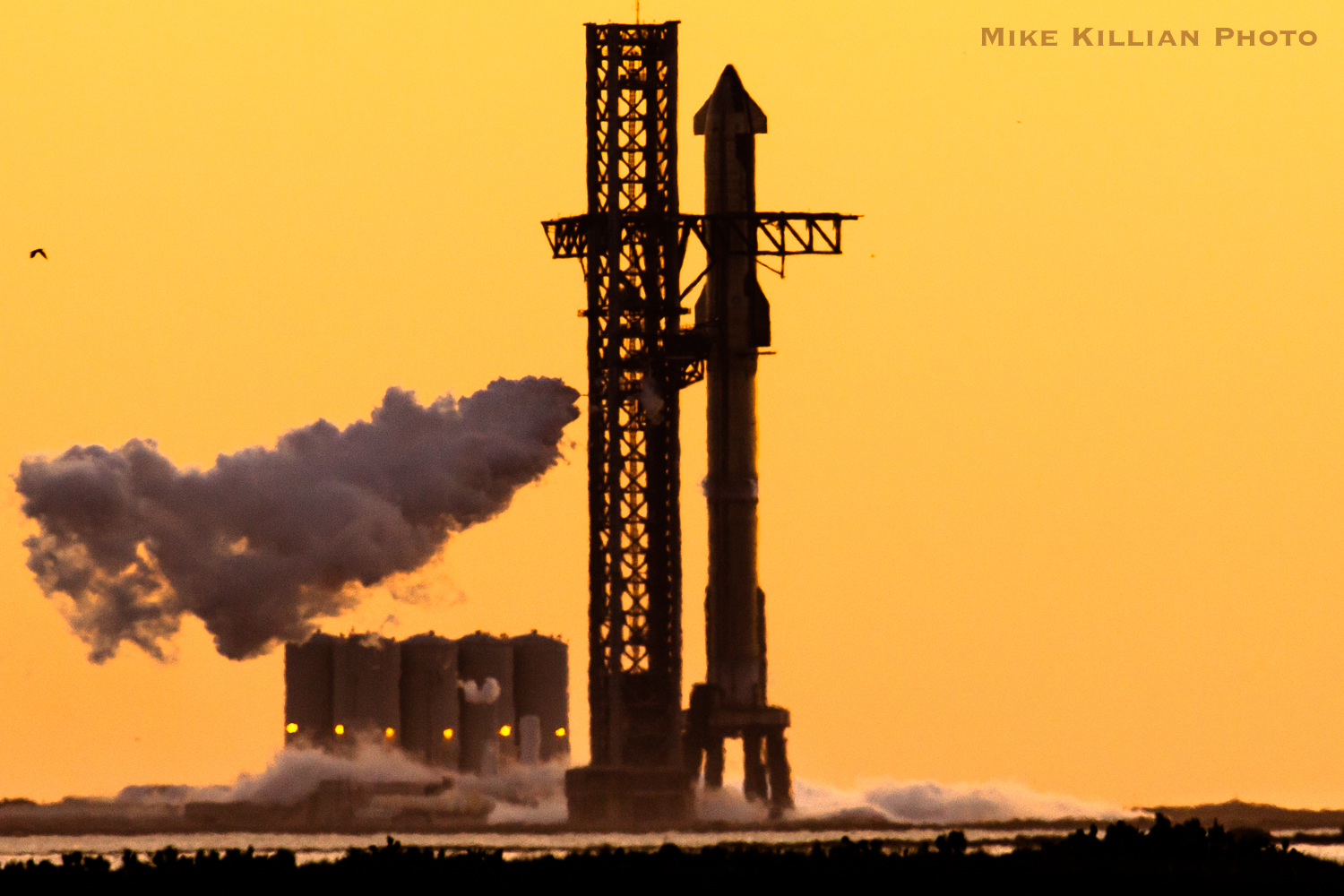
More recently, in July the Super Heavy for IFT-2 (Booster Nine) was transported to the pad for tests, with an expectation that it would loft Ship 25 on a transatmospheric flight closely mirroring the trajectory envisaged for its unsuccessful April mission. It underwent a successful Static Fire Test a few weeks later and in late October SpaceX teams conducted a single-engine test to demonstrate Starship’s deorbit burn capability and loaded the entire vehicle with propellant in a flight-like launch-day rehearsal.
Last Thursday, Ship 25 was hoisted atop the Super Heavy, targeting a two-hour “launch window” from 7 a.m. CST through 9 a.m. CST Friday. But within hours, Friday’s launch attempt was scrubbed, Ship 25 was destacked and a new T-0 next morning.
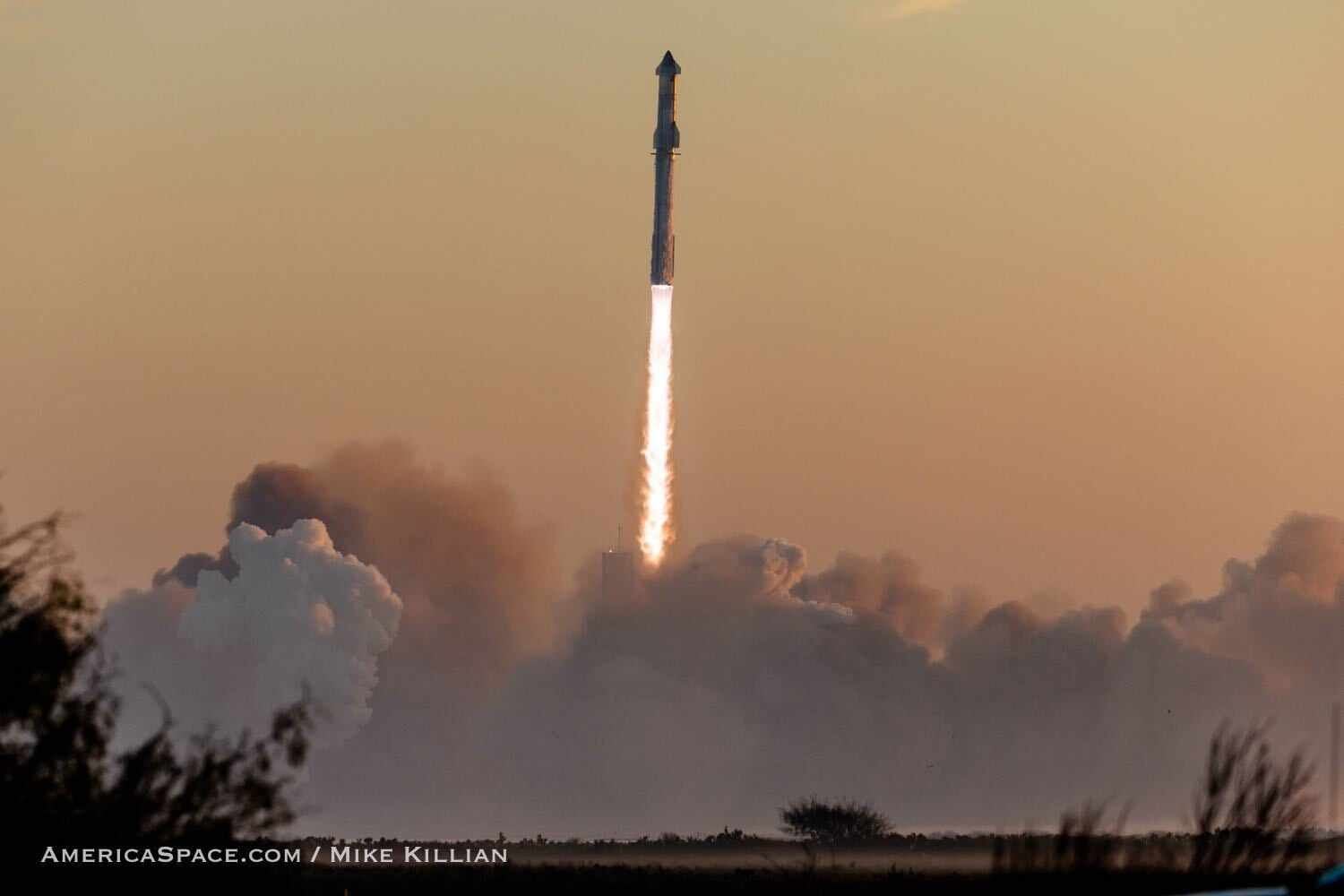
“We need to replace a grid-fin actuator,” tweeted SpaceX CEO Elon Musk on X. “Launch is postponed to Saturday.”
Late Friday night, SpaceX reported the stack was “ready on the launch pad” at Starbase, tracking a narrow 20-minute window, which opened at 7 a.m. CST Saturday.
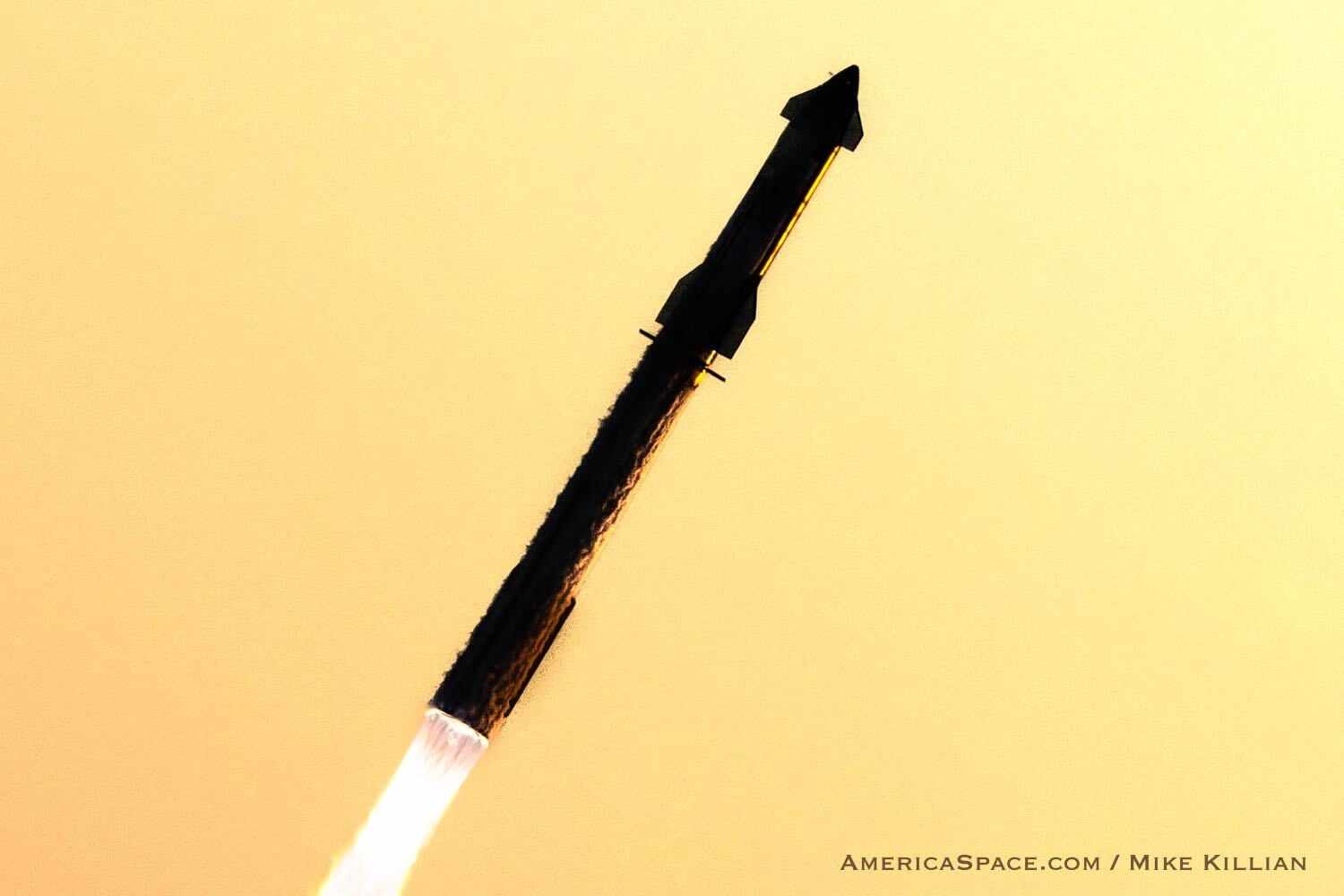
“This is another chance to put Starship in a true flight environment, maximizing how much we learn,” SpaceX tweeted. “Rapid iterative development is essential as we work to build a fully reusable launch system capable of carrying satellites, payloads, crew and cargo to a variety of orbits and Earth, lunar and Martian landing sites.”
At T-2 hours, the SpaceX Launch Director conducted a poll of the team, then authorized the loading of more than ten million pounds (4.5 million kilograms) of liquid oxygen and liquid methane into the Super Heavy and Starship. Fueling of the booster commenced at T-97 minutes, with that of the Starship underway by T-77 minutes. Chill-down of the Raptor engines on both stages occurred at T-19 minutes and 40 seconds.
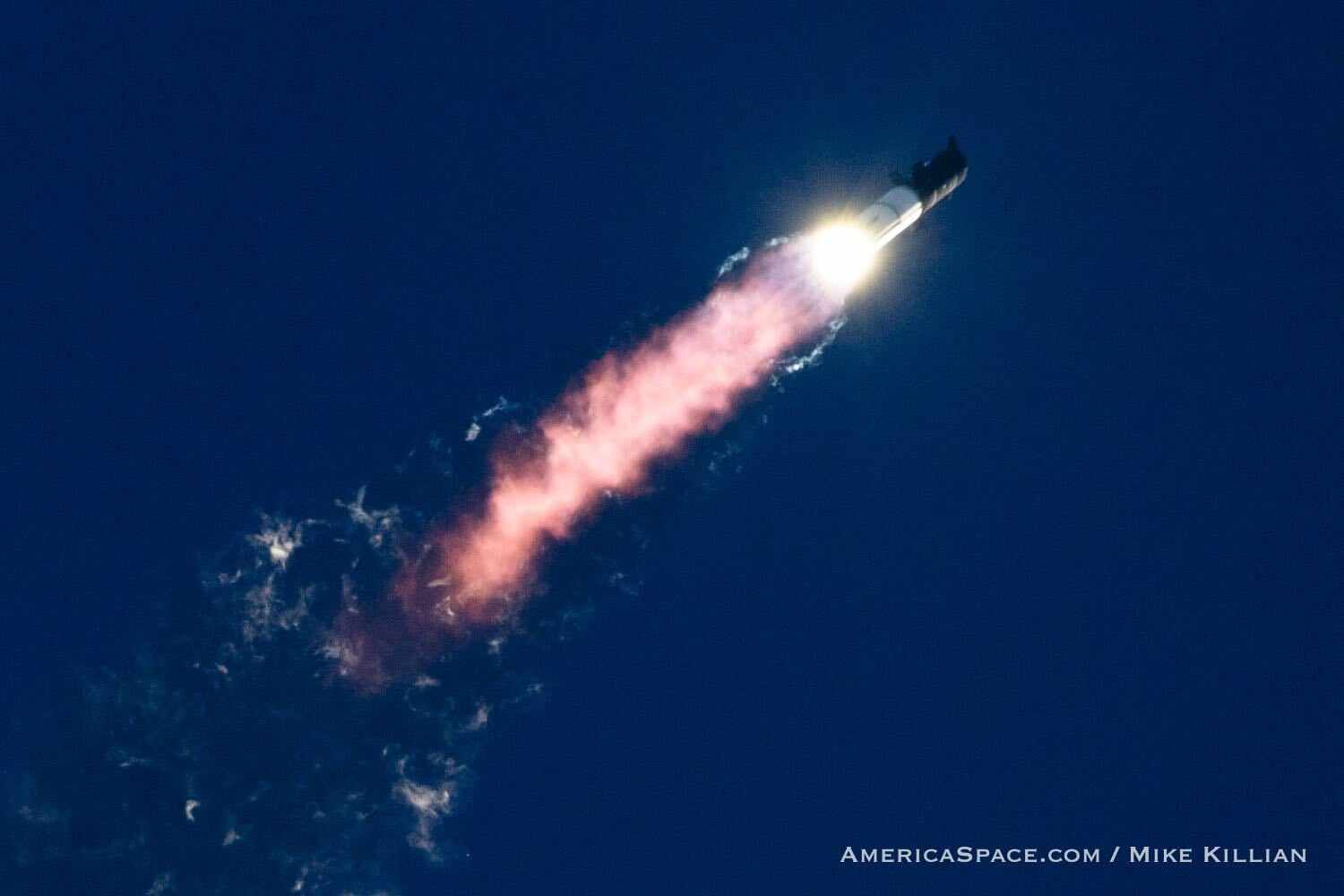
As the clock passed inside T-10 minutes, no issues were reportedly being tracked with the vehicle and fueling of Ship 25 concluded around T-5 minutes and of the Super Heavy at T-3 minutes. Concerns that boats in the Gulf of Mexico might stray into the launch danger area proved unfounded and at T-2 minutes SpaceX reported that there would be no need to halt the countdown at the T-40 second “hold” point.
In those final minutes, the Raptors in the Super Heavy’s base were gimbaled to test their readiness to support the launch. Hearts momentarily froze when the clock did indeed pause at T-40 seconds, apparently due to an issue pertaining to late pressurization of the second stage. However, in a timely fashion the count resumed.
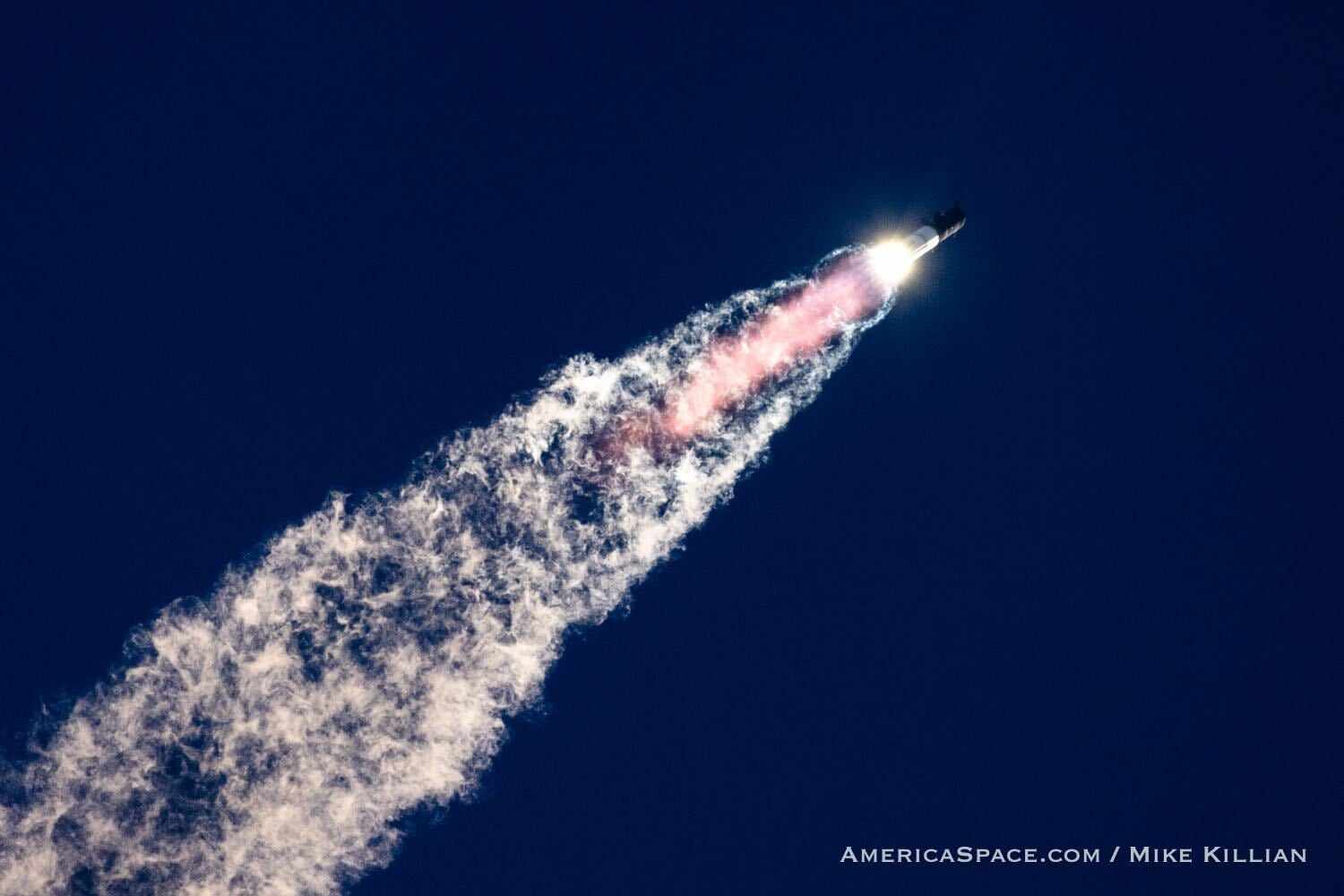
Three seconds before liftoff, the 33 Raptors came alive, to “Excitement Guaranteed”, as SpaceX put it. Unlike IFT-1, the gigantic stack powered off the pad with 33 beautiful blobs of light at her tail-end for the entirety of first-stage flight, before the Super Heavy approached Main Engine Cutoff (MECO) at T-2 minutes and 40 seconds.
Shortly before first-stage separation, Ship 25’s own suite of Raptors ignited in a “Hot Staging” separation event. “Starship and Super Heavy are being upgraded to use a separation method called hot staging,” SpaceX tweeted earlier this summer, “where Starship’s second-stage engines will ignite to push the ship away from the booster.”
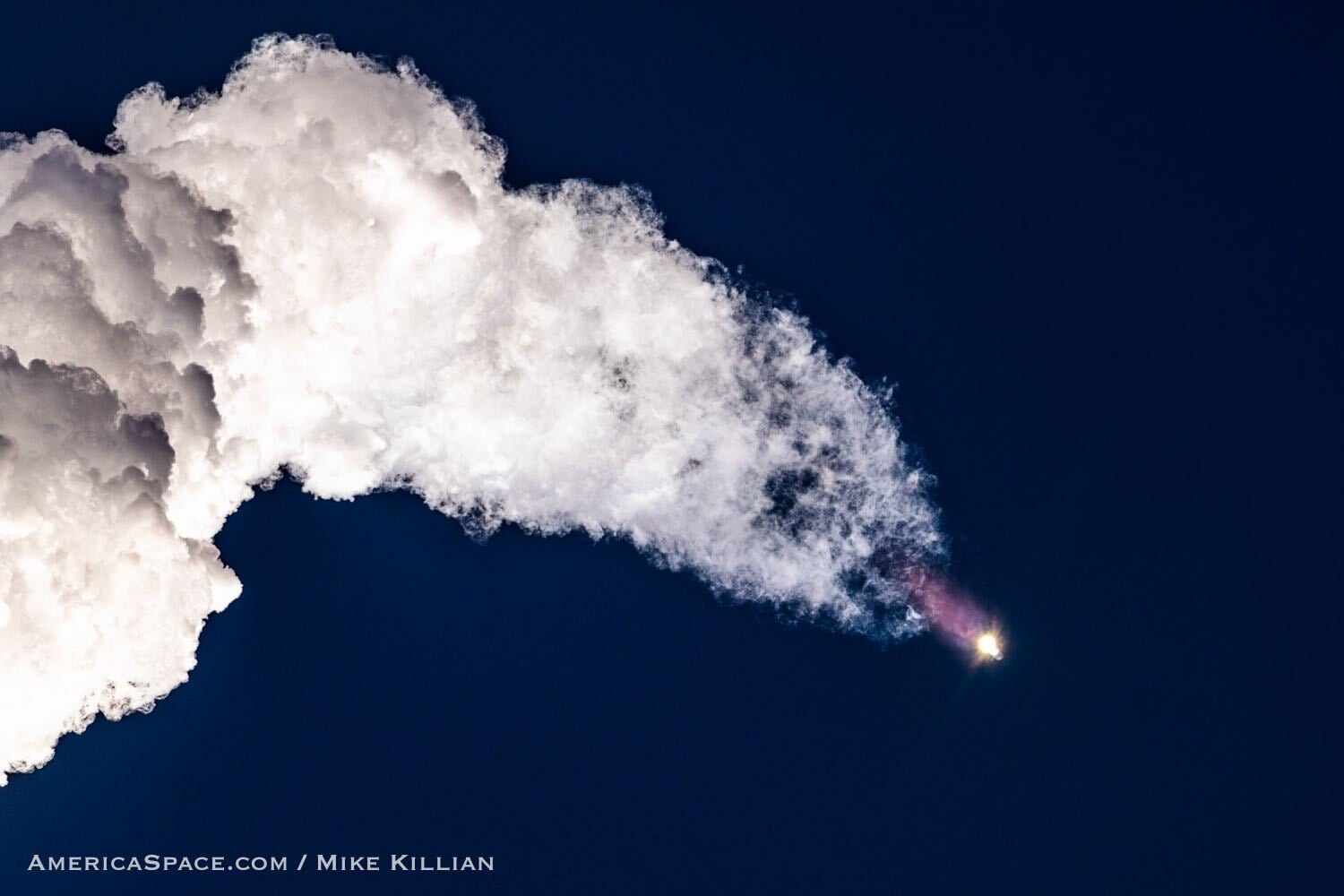
Following hot staging, the Super Heavy separated from the stack about two minutes and 45 seconds into flight and commenced its “flip” maneuver, with the intention that it would conduct a 54-second “boostback” burn and later an 18-second “landing” burn before a hoped-for vertical splashdown in the Gulf of Mexico about seven minutes after launch. However, shortly after T+3 minutes, in a flare of light the Super Heavy vanished like a blip from a radar screen and was gone.
In the meantime, all six Raptors on Ship 25 came alive and ran successfully, with an expectation that they would burn for almost six minutes, ahead of cutoff, then a “transatmospheric” coast almost three-quarters of the way around the world and finally a splashdown in the Pacific Ocean some 68 minutes after launch. And the Starship came tantalizingly close to achieving just that on today’s mission.
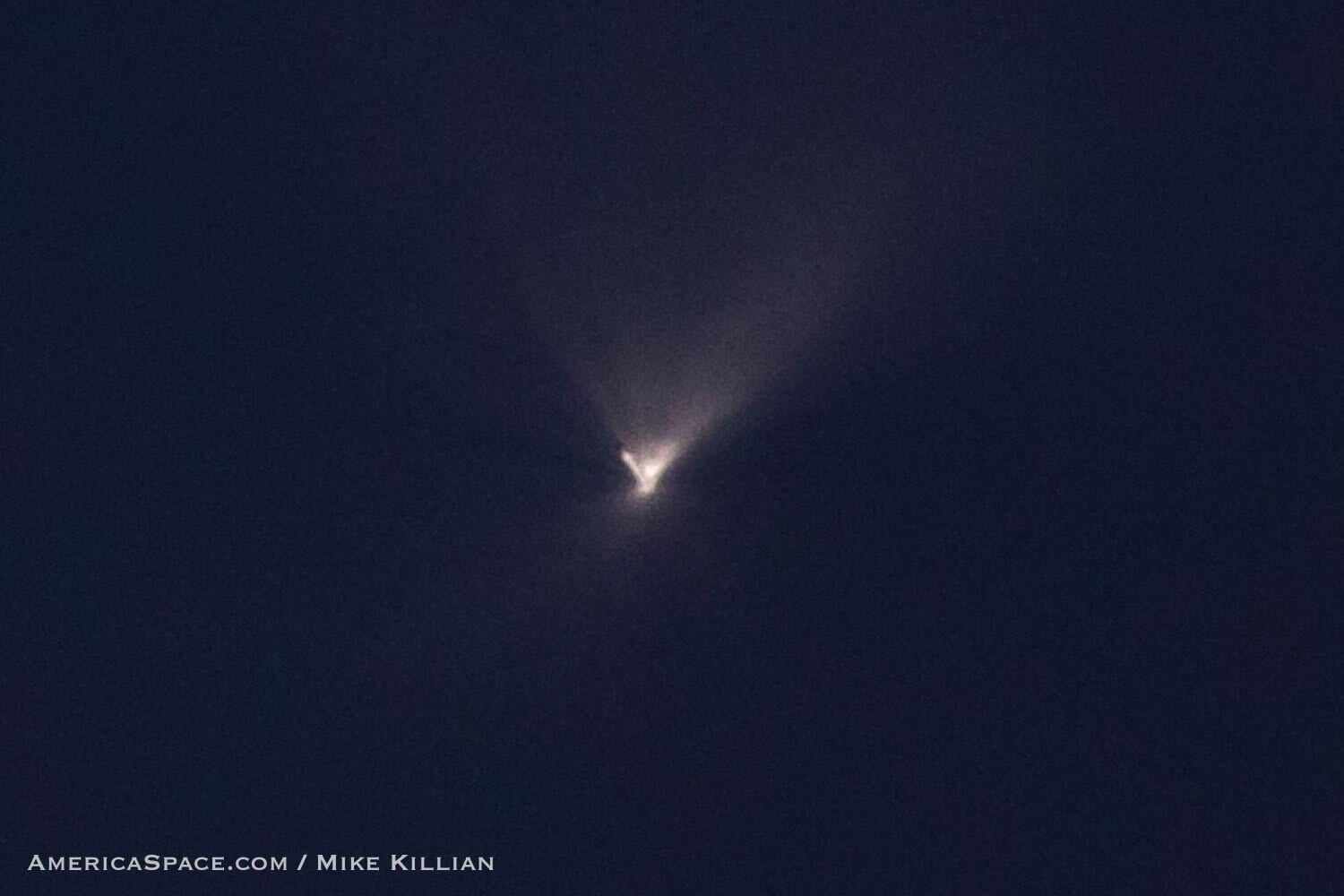
As late as T+6 minutes, nearly four minutes into its lengthy burn, chamber pressures aboard Ship 25 were reportedly nominal. But around eight minutes, the faint dot of the Starship’s burning Raptors also disappeared, the altitude indicator froze at 91.9 miles (148 kilometers) and the velocity counter halted at 14,990 mph (24,124 km/h). At 11 minutes after launch, SpaceX reported that data from Ship 25 had been lost and that the vehicle had closely approached the intended duration of its burn profile.
Although today’s launch ended with the disappointing loss of both the Super Heavy and the Starship, a first-glance assessment indicates a number of advances from the partial success of its predecessor in April. Like IFT-1, the stack successfully cleared the pad and attained altitude, but in contrast to its predecessor the Super Heavy this time round completed a full burn profile with no Raptor failures, with all 33 engines still running at MECO.
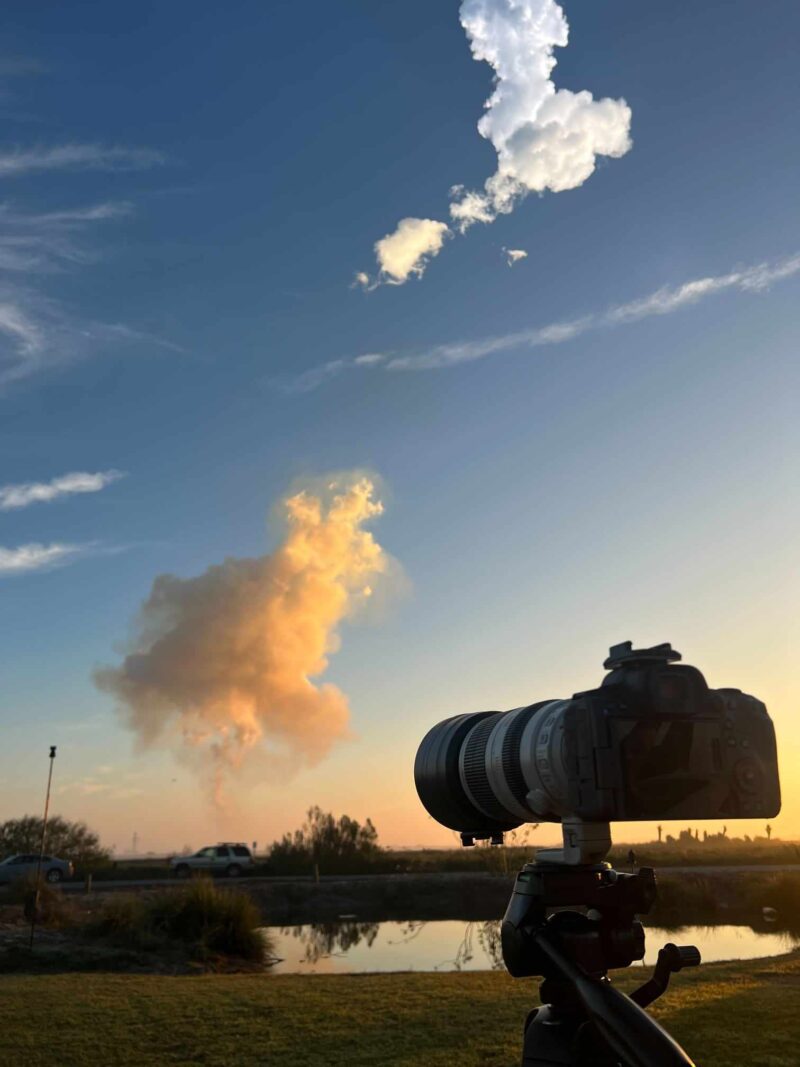
Added to that, a successful hot staging between the booster and the Starship was executed, an apparently clean separation event between the pair occurred and an (almost) full-duration burn of Ship 25’s Raptors was undertaken. AmericaSpace’s Mike Killian, watching IFT-2 from Boca Chica, also made a number of pertinent observations about the differences between April’s launch attempt and today’s IFT-2.
“Deluge definitely made a huge difference,” he reported, with the launch pad’s deluge system delivering about 260,000 gallons (984,000 liters) of water onto the launch mount to reduce the reflected energy at liftoff. “We could tell immediately. Could actually see some of the booster as it lifted and it got off the pad faster than the first time. Extremely impressive and loud.”





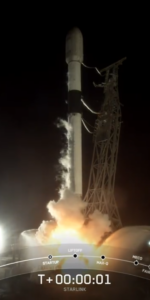
13 Comments
Leave a Reply13 Pings & Trackbacks
Pingback:SpaceX Wraps Up Triple-Header Weekend, Flies Year’s 25th Vandenberg Mission - AmericaSpace
Pingback:SpaceX Wraps Up Triple-Header Weekend, Flies Year’s 25th Vandenberg Mission - SPACERFIT
Pingback:SpaceX’s New Design for Lunar Starship Unveiled - AmericaSpace
Pingback:SpaceX’s New Design for Lunar Starship Unveiled - SPACERFIT
Pingback:SpaceX Launches 19x-Flown Falcon 9, Adds New Record to 2023 Books - AmericaSpace
Pingback:SpaceX Launches 19x-Flown Falcon 9, Adds New Record to 2023 Books - SPACERFIT
Pingback:SpaceX Targets Tuesday for 2024’s First Launch, Busy January Lies Ahead - AmericaSpace
Pingback:SpaceX Targets Tuesday for 2024’s First Launch, Busy January Lies Ahead - SPACERFIT
Pingback:2024: Year of the Moon - SPACERFIT
Pingback:SpaceX Aims For Sixth, Seventh Launches of March, as Falcon 9, Starship Stand Ready - AmericaSpace
Pingback:IFT-3 Starship Flies, Achieves Significant Performance Milestones - AmericaSpace
Pingback:IFT-3 Starship Flies, Achieves Significant Performance Milestones - SPACERFIT
Pingback:SpaceX Aims For Sixth, Seventh Launches of March, as Falcon 9, Starship Stand Ready - SPACERFIT